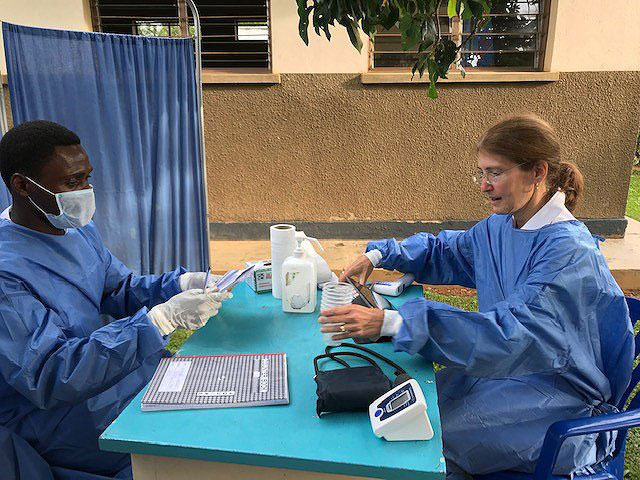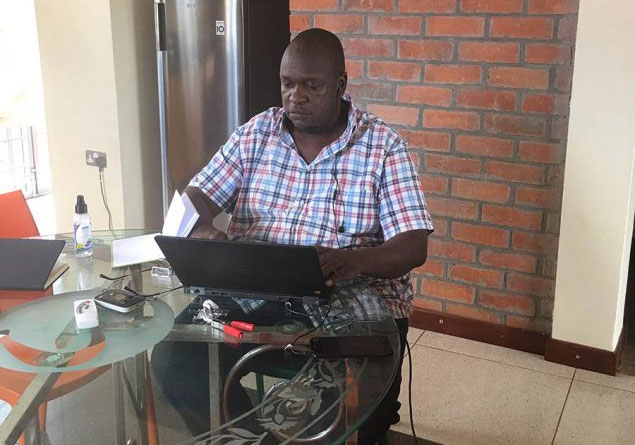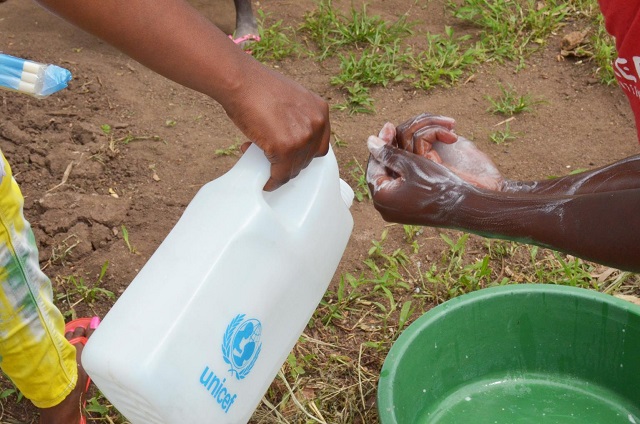
Wasike – CDC expertise and superior labs have turned out to be crucial in Uganda’s much praised battle against COVID-19
Kampala, Uganda | THE INDEPENDENT | Strong partnerships and The Centers for Disease Control and Prevention (CDC) investments years ago in Uganda’s public health system have been critical to Uganda’s early success in responding to the COVID-19 pandemic.
On March 21, 2020, Uganda confirmed its first case of COVID-19, leading to the rapid activation of the response phase and Incident Management Teams (IMTs) for both the U.S. Government and the Uganda Ministry of Health (MOH). As of June 1, 2020, Uganda reported 489 confirmed cases of COVID-19 with no deaths.
“My greatest satisfaction in this response has been building on our earlier efforts,” said Samuel Wasike, Deputy Incident Manager (IM) of the U.S. team supporting Uganda’s MOH.
Wasike added, “How could we have known that CDC investments over the last 15 years—superior testing capabilities through our laboratory support, sample transportation network, and a competent technical team—would pay off so greatly?”
Past U.S. Government investments in the Global Health Security Agenda, the President’s Emergency Plan for AIDS Relief (PEPFAR), and the President’s Malaria Initiative laid the foundation for Uganda’s COVID-19 preparedness and response.
PEPFAR support facilitated the development of multiple guidelines and trainings to improve the skills of Ugandan response staff.
CDC support for influenza surveillance at the Uganda Virus Research Institute (UVRI) is proving critical in the COVID-19 response. Several other labs at UVRI and other laboratory partners are redirecting resources to the COVID-19 response.
The Centers for Disease Control and Prevention (CDC) began working in Uganda in 1991, officially establishing a country office in 2000. With a focus on the prevention, control, and treatment of HIV/AIDS, CDC works with the Ministry of Health and other partners to deliver evidence-based, quality health services.
CDC also supports tuberculosis and malaria control efforts and maternal and child health services while advancing global health security by improving Uganda’s ability to prevent, detect, and respond to public health threats.

Strong partnership with Ministry of Health
Wasike provides CDC’s technical expertise to key partners leading the country’s response.
“CDC Uganda has a nationwide reach and is consistently in touch with the Ministry of Health and other external partners,” said Wasike.
Strong strategic relationships with the Uganda MOH, the World Health Organization , the UN Children’s Fund (UNICEF), the Infectious Diseases Institute, the Clinton Health Access Initiative, and UVRI helped drive critical measures needed to prevent and slow the spread of COVID-19.
CDC Uganda continues to provide strong technical input to the Uganda MOH. For example, with CDC Uganda input, the Emergency Operations Center (EOC) set up a national task force to prepare for the COVID-19 pandemic before the first cases were detected and continues to monitor the Ebola situation in neighboring Democratic Republic of the Congo, among other disease threats.
The sudden transition from a National Task Force to an IMT led to logistical challenges requiring both human resources and materials. It also required switching from in-person meetings to virtual communications almost overnight. Many CDC staff were reassigned from their routine duties to support the pandemic response.
The initial response focused on screening airport entrants based on high-risk categorization. The response soon expanded to include collecting laboratory samples at 53 points of entry and alerts from call centers and other high-risk groups (such as contacts of confirmed patients).
The Government of Uganda has been instrumental in supporting the response based on global guidance and best practices.
Since deploying to the response full-time, Wasike’s regular duties as a supply chain specialist have been put on hold.
As Deputy IM, Wasike oversees US Government activities in three pillars of the Uganda response: risk communications, laboratory, and emergency operations.
In addition, Wasike attends the Uganda IMT meeting twice daily where all pillars are required to report and provide strategy and directives provided to the response.

Challenges on the frontlines
To Wasike, the biggest challenge is “matching the needs of a fast-changing pandemic amid a global slowdown and scarcity of materials required for this response.”
While COVID-19 has turned daily life upside down for Ugandans, there have been some positive shifts in public health behavior, like improved hand hygiene resulting from the establishment of handwashing stations in public places and the use of alcohol-based hand rub.
Innovations like foot-pedal handwashing stations have helped reduce people’s contact with commonly touched surfaces.
There has been a remarkable conversion to teleconferencing for meetings, teleworking, and increased use of digital platforms for daily monetary transactions. These efforts have helped prevent the spread of COVID-19 in Uganda.
*****
SOURCE: CDC Uganda
 The Independent Uganda: You get the Truth we Pay the Price
The Independent Uganda: You get the Truth we Pay the Price


